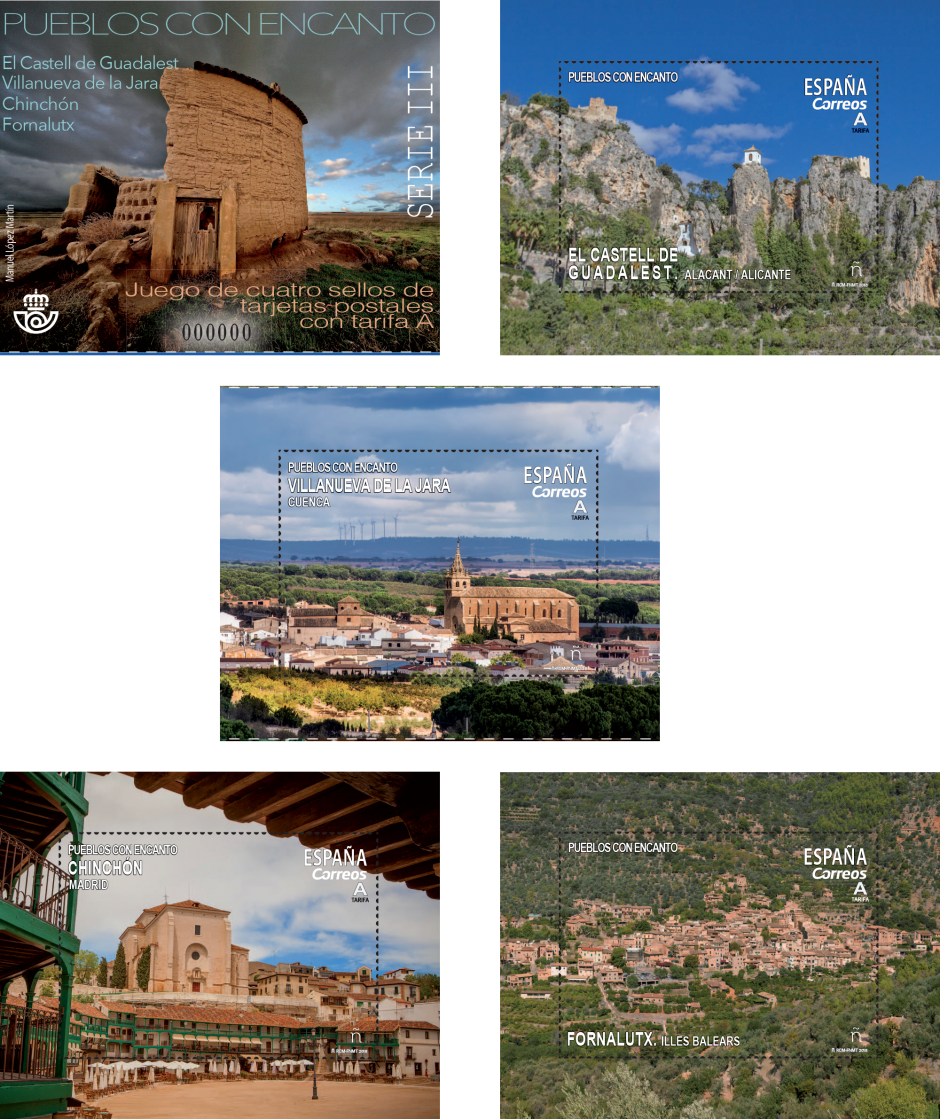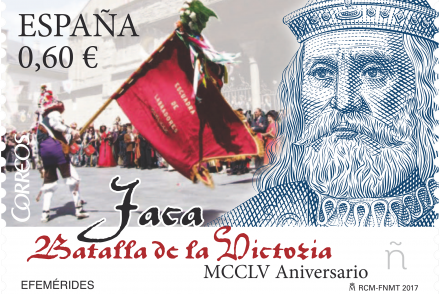Charming Towns
Spain – For the third year running, Correos is issuing this series of stamps dedicated to the charming towns that make up our country’s geography and whose depictions will be travelling around the world on shipments despatched from Spain. This detachable according-fold series, paying homage to old-fashioned fold-out postcards, also presents the reverse side of the stamp printed just like the backs of those cards used to be. The booklet has four self-sticking stamps and a vignette.
The towns selected for this year’s stamps are: Villanueva de la Jara in Cuenca, Chinchón in Madrid, Fornalutx in the Balearic Islands and El Castell de Guadalest in Alicante.
Villanueva de la Jara, in the province of Cuenca, is a municipality going back to the time of the Catholic Monarchs (King Ferdinand and Queen Isabel), that was was granted the Privilege of Villazgo after its residents had proved their loyalty to Isabella the Catholic. Its many charms include its Plaza Mayor, the town’s central axis; its La Asunción and El Carmen churches and Carmelite Convent make it a worthy contender for one of the loveliest towns in Spain. A stroll through its streets gives you a taste of its history.
Chinchón, is a Madrid-area town, famous worldwide, among other things, for the drink named after it. But there is much more to it than that, visiting Chinchón is to transport yourself back to the Middle Ages as you contemplate its Plaza Mayor and Torre del Reloj (Clock Tower). Its castle, El Castillo de los Condes, was built on the orders of Diego Fernández de Cabrera y Mendoza. It housed a licor factory during the 20th century, having been abandoned for many years.
Fornalutx, is a location making up the Balearic archipelago, more specifically, on the Island of Majorca, in the heart of the Tramontana mountain range. It is known as the “loveliest town in Spain”, which is hardly surprising given its red-roofed stone houses and buildings, surrounded by orange and lemon trees that fill its streets with an aroma and unique environment.
El Castell de Guadalest, in Alicante, located on the top of a 595m-high crag, a marvel for its rock-embedded houses. It was declared a historical artistic complex in 1974 owing to its composition, castle hanging from the top of a cliff, the old medieval walls and the El Arrabal neighbourhood. There are a good many tourists from the nearby Costa Blanca who reserve a day from their holidays to discover this part of inner Alicante and are never disappointed.




